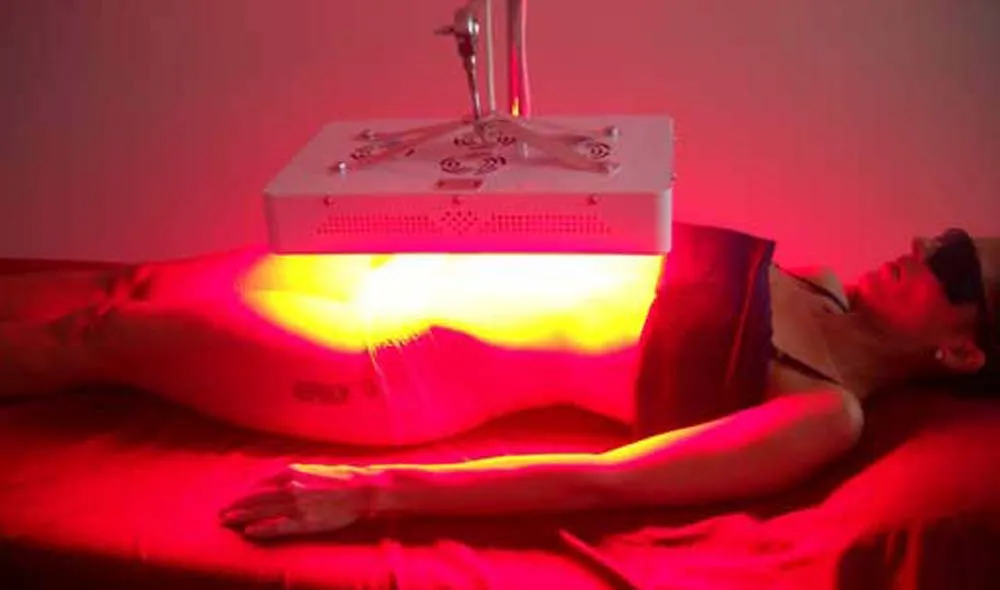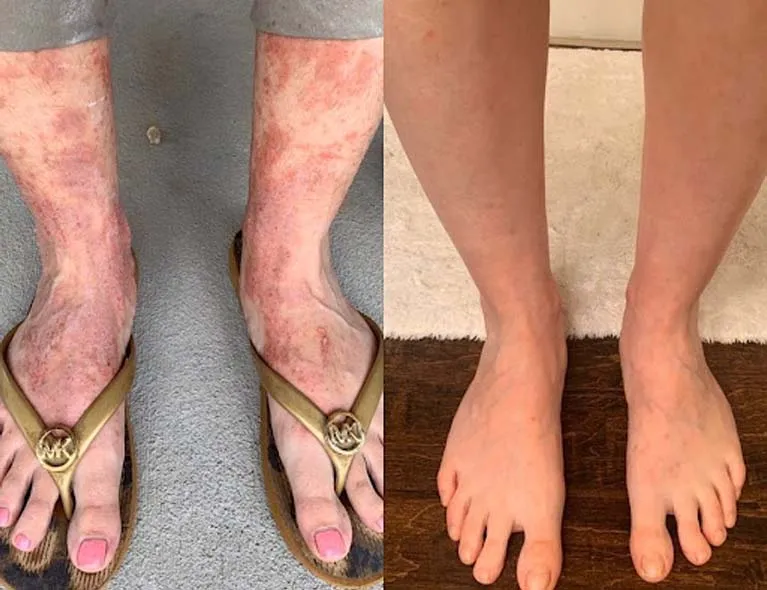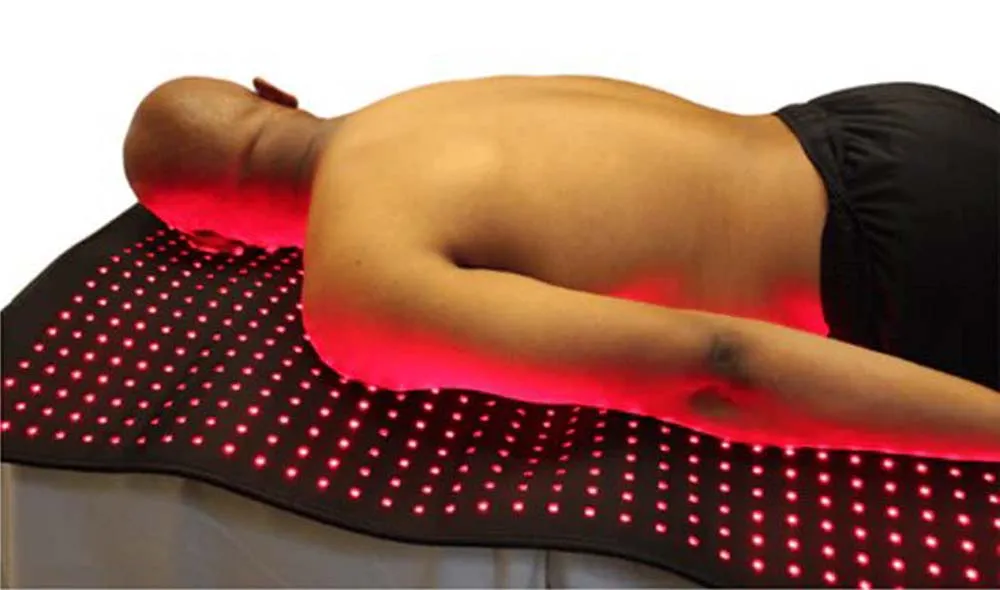Eczema is a chronic skin condition that affects millions of people worldwide, causing discomfort, itching, and inflammation. For many, finding an effective and sustainable treatment is an ongoing challenge. While traditional treatments like topical creams and steroids can offer relief, they often come with limitations and side effects. As a result, more people are turning to alternative therapies to manage their symptoms.
One such promising option is red light therapy. Originally developed to promote wound healing and reduce pain, red light therapy has gained popularity for its potential benefits in treating various skin conditions, including eczema. But can red light therapy really provide relief from eczema? In this article, we’ll explore how this innovative therapy works, the science behind it, and whether it could be the solution you’ve been searching for.

What is Eczema?
Eczema, also known as atopic dermatitis, is a chronic inflammatory skin condition that affects millions of people worldwide. It is characterized by dry, red, and itchy skin, which can become inflamed, cracked, and even bleed in severe cases. Eczema can occur anywhere on the body but is most commonly found on the hands, feet, face, and the insides of the elbows and knees.
The exact cause of eczema is still not fully understood, but it is believed to be a combination of genetic and environmental factors. Those with eczema often have a compromised skin barrier, making their skin more susceptible to irritants, allergens, and infections. This weakened barrier also allows moisture to escape more easily, leading to dryness and irritation.
Eczema is a condition that can significantly impact a person’s quality of life. The persistent itchiness can lead to scratching, which further damages the skin and can cause secondary infections. Flare-ups can be triggered by various factors, including stress, weather changes, certain foods, and exposure to allergens or harsh skincare products.
While there is no cure for eczema, the condition can be managed through a combination of treatments, including moisturizing, avoiding triggers, and using prescribed medications. Recently, alternative treatments like red light therapy have emerged as potential options for managing symptoms and improving skin health.
How Does Red Light Therapy Work for Eczema?
Red light therapy operates by emitting specific wavelengths of light, typically in the range of 630nm to 850nm, which penetrate the skin to stimulate cellular activity. This process, known as photobiomodulation, promotes healing and reduces inflammation by increasing the production of ATP (adenosine triphosphate), the energy source for cells.
For eczema sufferers, this means that red light therapy can potentially reduce the inflammation and irritation that contribute to flare-ups. The therapy works by:
- Reducing Inflammation: Red light helps to calm the immune response that causes eczema symptoms, leading to less redness, swelling, and discomfort.
- Boosting Skin Repair: The increase in ATP production accelerates skin cell regeneration, helping to repair the damaged skin barrier that is often compromised in eczema patients.
- Alleviating Itchiness: By soothing irritated nerve endings, red light therapy may reduce the persistent itch associated with eczema, providing much-needed relief.
- Improving Skin Hydration: Red light therapy can also enhance skin hydration by promoting better circulation and improving the skin’s ability to retain moisture, which is crucial for managing eczema.
Though red light therapy is not a cure for eczema, it offers a non-invasive, drug-free option that could complement other treatments and provide additional relief from the symptoms of this chronic condition.

Research and Studies of Red Light Therapy for Eczema
Red light therapy, also known as low-level laser therapy (LLLT) or photobiomodulation, has been investigated for its potential benefits in treating various skin conditions, including eczema. While research is still evolving, several studies suggest that red light therapy can positively impact eczema symptoms by reducing inflammation, improving skin healing, and alleviating itchiness.
1. Study on Anti-Inflammatory Effects
A study published in the Journal of Clinical and Aesthetic Dermatology examined the anti-inflammatory effects of red light therapy in patients with eczema. The researchers found that red light therapy significantly reduced inflammation and redness in the affected areas, suggesting that it can help alleviate the primary symptoms of eczema. The study demonstrated that patients experienced a reduction in eczema flare-ups and improved skin texture after several sessions of red light therapy.
2. Enhanced Skin Healing
Research featured in Photomedicine and Laser Surgery highlighted the role of red light therapy in accelerating skin repair and regeneration. The study showed that red light therapy increased collagen production and improved skin barrier function, which is crucial for managing eczema. By enhancing the skin’s ability to repair itself, red light therapy may help reduce the severity and frequency of eczema flare-ups.
3. Reduction in Itchiness
A clinical trial reported in Dermatology Research and Practice focused on the impact of red light therapy on itchiness associated with eczema. The study found that participants experienced a significant reduction in itchiness after undergoing red light therapy. This alleviation of itchiness can be particularly beneficial for eczema patients, as it helps break the cycle of scratching and skin damage.
4. Improvement in Moisture Retention
An investigation published in The Journal of Dermatological Treatment explored the effects of red light therapy on skin hydration. The study observed that red light therapy improved skin moisture levels and enhanced overall skin hydration. Since maintaining proper moisture levels is crucial for managing eczema, this finding suggests that red light therapy could be an effective adjunct to traditional eczema treatments.
5. Safety and Efficacy
A review article in Frontiers in Physiology summarized various studies on the safety and efficacy of red light therapy for skin conditions. The review concluded that red light therapy is a safe, non-invasive treatment with promising results for reducing inflammation, promoting skin healing, and alleviating symptoms in conditions like eczema. The study emphasized that more research is needed to fully understand the optimal parameters and long-term benefits.

How to Use Red Light Therapy for Eczema
Using red light therapy for eczema involves a few key steps to ensure you get the most benefit from the treatment. Here’s a practical guide to help you integrate red light therapy into your eczema management routine:
1. Choose the Right Device
Select a red light therapy device that is suitable for your needs. Devices vary in terms of wavelength, power, and design. For eczema, look for devices that offer wavelengths between 630nm and 850nm, as these are most effective for penetrating the skin and reducing inflammation. Options include handheld devices, panels, or even specialized wearable products.
2. Prepare the Treatment Area
Before starting your session, ensure the area to be treated is clean and dry. Remove any lotions, creams, or other products that might block the light from reaching your skin. For optimal results, use the therapy on freshly washed skin.
3. Follow the Recommended Treatment Duration
Adhere to the manufacturer’s guidelines for treatment duration and frequency. Typically, sessions last between 5 to 20 minutes. For most people, using the therapy 2 to 3 times per week is effective. Overuse can lead to diminished returns, so it’s important to follow the recommended schedule.
4. Maintain the Appropriate Distance
Position the red light therapy device at the recommended distance from your skin, usually between 6 to 12 inches. This distance allows for effective penetration of the light while preventing potential overheating or discomfort.
5. Focus on Affected Areas
Direct the light therapy device towards the areas affected by eczema. Ensure that the light is evenly distributed over the skin, and move the device in slow, circular motions to cover the entire area if needed. Avoid concentrating the light in one spot for too long to prevent overstimulation.
6. Consistency is Key
Consistency in using red light therapy is crucial for seeing results. Incorporate it into your routine as directed, and monitor your skin’s response over time. Eczema treatment can be gradual, so patience is essential.
7. Monitor Skin Reactions
Pay attention to how your skin reacts after each session. While red light therapy is generally well-tolerated, some individuals may experience temporary redness or sensitivity. If you notice any adverse reactions, adjust the treatment frequency or consult with a healthcare provider.
8. Combine with Other Treatments
Red light therapy can complement other eczema treatments, such as moisturizers or prescribed medications. However, it’s important to avoid applying any products immediately before or after treatment that might interfere with the therapy’s effectiveness.
9. Consult a Professional
If you’re unsure about incorporating red light therapy into your eczema management plan, consult with a dermatologist or healthcare provider. They can provide personalized advice and help determine the best approach based on your specific condition.
Conclusion
Red light therapy offers a promising alternative or complement to traditional eczema treatments by addressing inflammation, enhancing skin repair, and improving moisture retention. With its non-invasive approach and growing body of research supporting its efficacy, red light therapy could provide significant relief for those struggling with eczema.
By incorporating red light therapy into your skincare routine, you may experience a reduction in symptoms such as redness, itchiness, and irritation. While it’s not a cure, it can be a valuable tool in managing eczema and improving your quality of life.
Remember, consistency is key, and it’s important to use the therapy as directed to achieve the best results. Consulting with a healthcare provider can help tailor the therapy to your specific needs and ensure it complements your overall eczema management plan. As research continues to uncover more benefits and refine usage guidelines, red light therapy stands out as an innovative approach in the ongoing effort to manage and alleviate eczema symptoms.

FAQ about red light therapy and eczema:
Yes, you can perform red light therapy for eczema at home, and many people do so successfully. Here’s a guide on how to do it effectively and safely:
1. Choose a Quality Device
Invest in a high-quality red light therapy device designed for home use. Look for devices that emit light at wavelengths between 630nm and 850nm, as these are effective for penetrating the skin and reducing inflammation. Options include handheld devices, light panels, and wearable products.
2. Follow Usage Instructions
Carefully read and follow the manufacturer’s instructions for your red light therapy device. Adhere to recommended treatment durations and frequencies to avoid overuse. Typically, sessions last between 5 to 20 minutes, 2 to 3 times per week.
3. Prepare the Treatment Area
Ensure the area of skin being treated is clean and dry. Remove any creams, lotions, or other products that might block the light. For optimal results, perform the therapy on freshly washed skin.
4. Maintain Proper Distance
Position the device at the recommended distance from your skin, usually between 6 to 12 inches. This distance allows for effective light penetration while preventing overheating or discomfort.
5. Monitor Skin Reactions
Observe how your skin responds to the therapy. While red light therapy is generally safe, some individuals may experience temporary redness or sensitivity. Adjust the frequency or duration if needed and consult a healthcare provider if you have any concerns.
6. Consistency and Patience
Be consistent with your treatment routine, as results may take time to become noticeable. Regular use as per the guidelines will help maximize the benefits.
7. Consult with a Healthcare Provider
If you have any doubts about using red light therapy at home, especially if you have severe eczema or other underlying conditions, consult with a dermatologist or healthcare provider. They can provide personalized advice and ensure that red light therapy is suitable for your specific needs.
Red light therapy has shown potential benefits for managing eczema, although research is still developing. Here’s a summary of how red light therapy can be beneficial for eczema and what factors to consider:
Benefits of Red Light Therapy for Eczema
- Reduces Inflammation: Red light therapy helps reduce inflammation by penetrating the skin and targeting the underlying tissues. This can help alleviate redness, swelling, and irritation associated with eczema.
- Enhances Skin Repair: The therapy promotes cellular repair and regeneration, aiding in the healing of damaged skin. This can lead to improved skin texture and reduced symptoms over time.
- Improves Moisture Retention: By stimulating the production of collagen and elastin, red light therapy can enhance the skin’s moisture retention, potentially reducing dryness and flakiness typical in eczema.
- Decreases Itchiness: Red light therapy may help reduce itchiness by calming inflammatory responses and improving skin health. This can provide relief from one of the most uncomfortable symptoms of eczema.
- Supports Overall Skin Health: Regular use of red light therapy can contribute to overall skin health, which is beneficial for managing chronic conditions like eczema. Improved skin condition can reduce flare-ups and improve overall comfort.
Considerations
- Individual Response: The effectiveness of red light therapy can vary from person to person. While many find it beneficial, others may not experience significant improvements. It’s essential to monitor your skin’s response and adjust treatment as needed.
- Complementary Treatment: Red light therapy is often used as a complementary treatment rather than a standalone cure. Combining it with other eczema management strategies, such as moisturizers or prescribed medications, may provide better results.
- Consultation with a Healthcare Provider: Before starting red light therapy, especially if you have severe eczema or other skin conditions, consult with a healthcare provider. They can provide guidance on integrating this therapy into your treatment plan and ensuring it is safe and appropriate for you.
ed light therapy is increasingly used as a complementary treatment for eczema, offering potential benefits in managing symptoms and improving skin health. Here’s a look at what you might expect before and after using red light therapy for eczema:
Before Red Light Therapy
- Symptoms: Individuals with eczema may experience various symptoms, including redness, itching, swelling, dryness, and flaking of the skin. These symptoms can range from mild to severe and are often exacerbated by factors like allergens, irritants, or stress.
- Skin Condition: The skin may appear inflamed, cracked, and dry. Common affected areas include elbows, knees, hands, and other flexural areas. The overall skin texture may be rough, and there might be visible signs of irritation.
- Treatment Routine: Prior to starting red light therapy, eczema management typically includes topical treatments such as corticosteroids, emollients, or other prescribed medications. Many individuals also use lifestyle adjustments to minimize flare-ups.
After Red Light Therapy
- Reduction in Symptoms: After consistent use of red light therapy, many users report a noticeable reduction in symptoms. This includes decreased redness, reduced itching, and less swelling. The therapy can help calm inflammatory responses, leading to more comfortable skin.
- Improved Skin Condition: Over time, red light therapy may contribute to improved skin texture. Skin may become less dry and flaky as the therapy promotes moisture retention and cellular repair. Healing of damaged skin can lead to a smoother and healthier appearance.
- Enhanced Healing: Red light therapy supports cellular regeneration and collagen production, which can accelerate the healing of eczema-affected areas. This can lead to quicker recovery from flare-ups and less overall damage to the skin.
- Overall Comfort: Users often experience greater comfort and relief from the discomfort associated with eczema. This improvement in quality of life can be significant for individuals who struggle with chronic eczema symptoms.
- Consistent Use Required: For the best results, consistent use of red light therapy is necessary. The benefits may accumulate over time, and regular sessions are recommended to maintain improvements and manage symptoms effectively.
